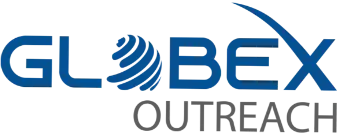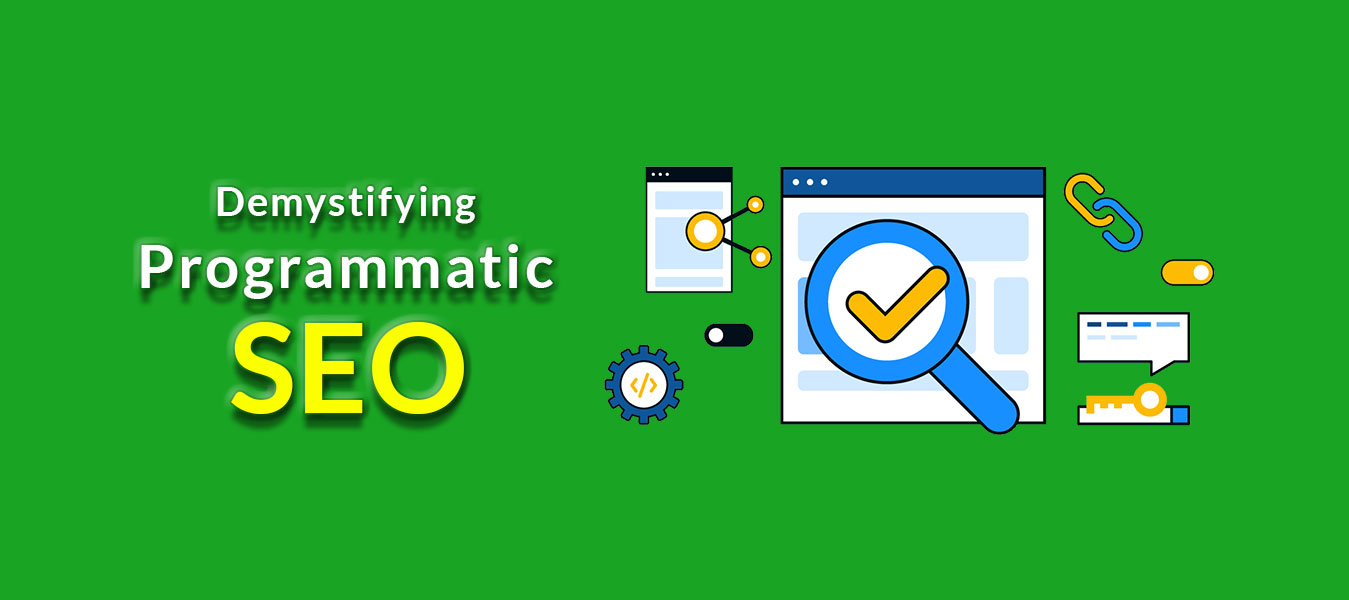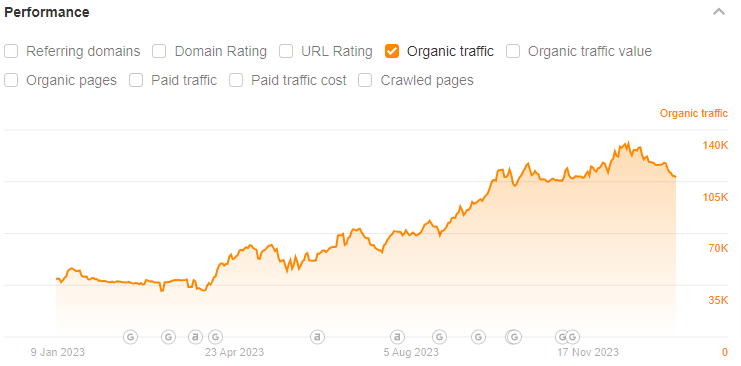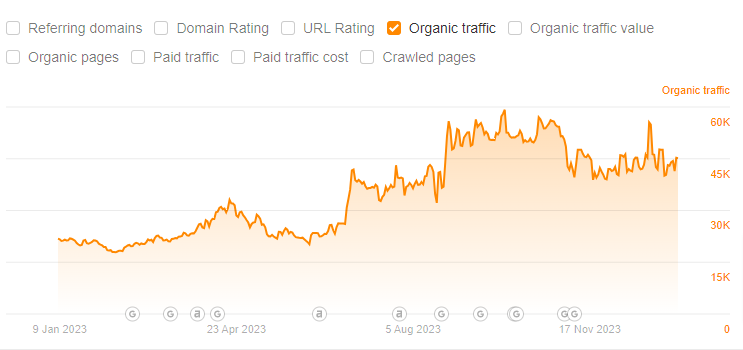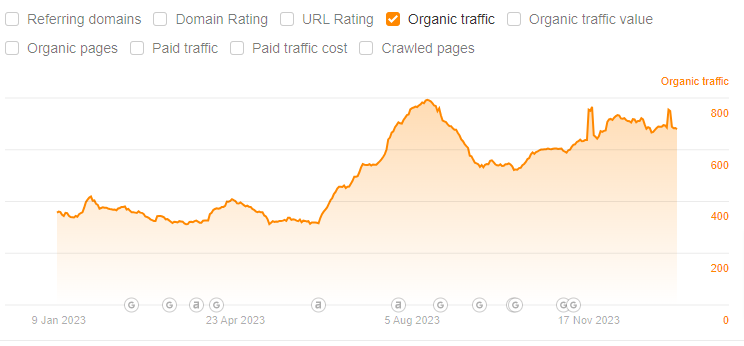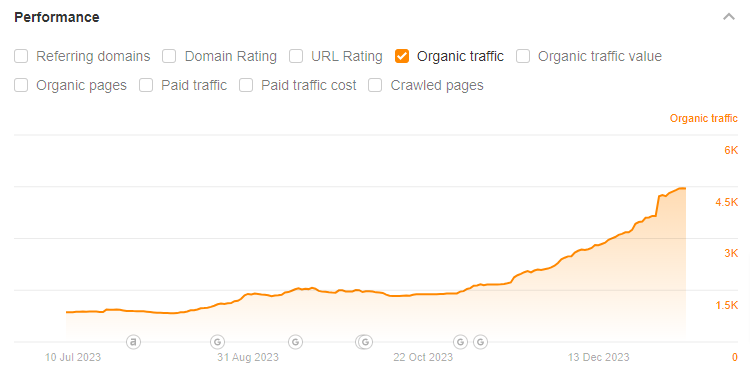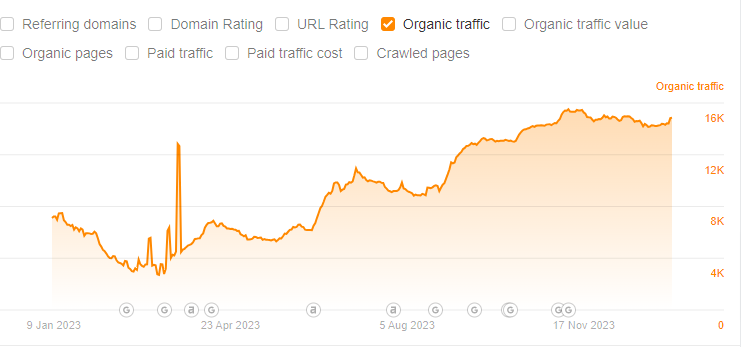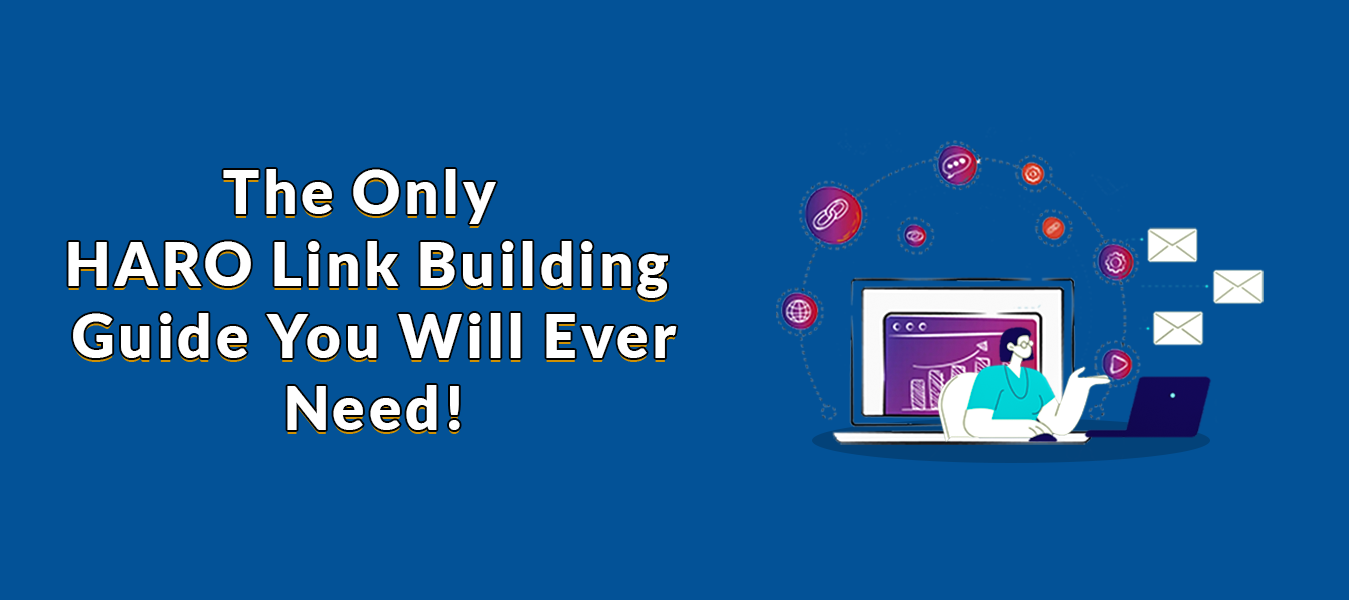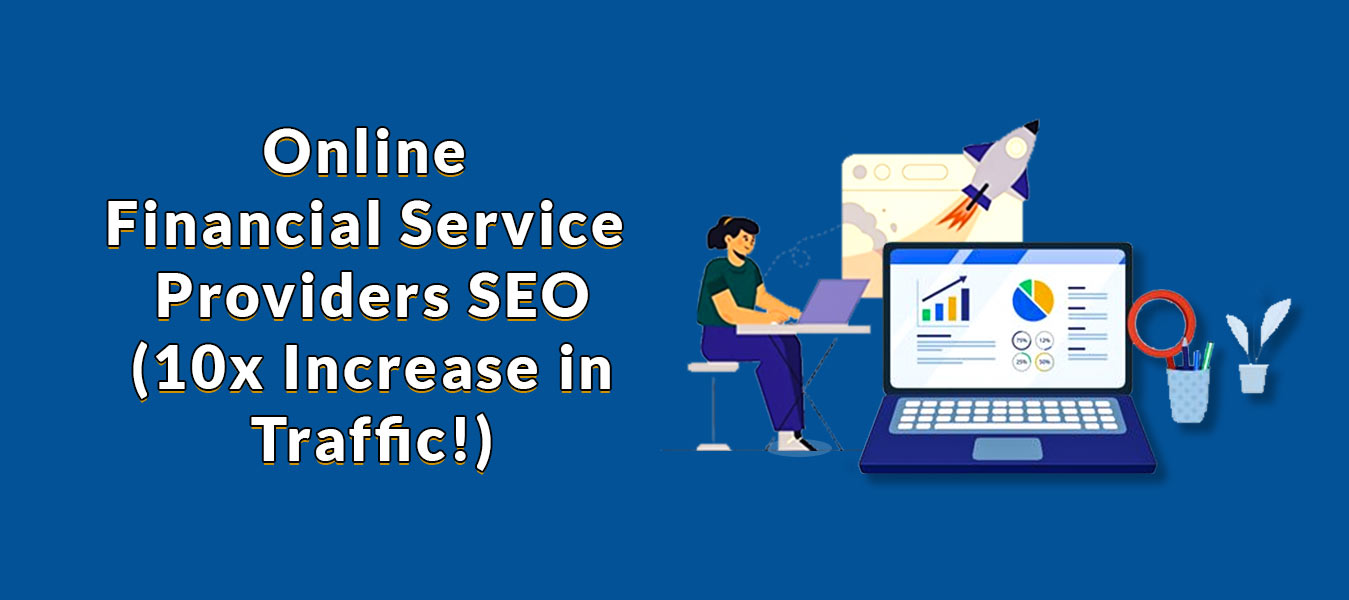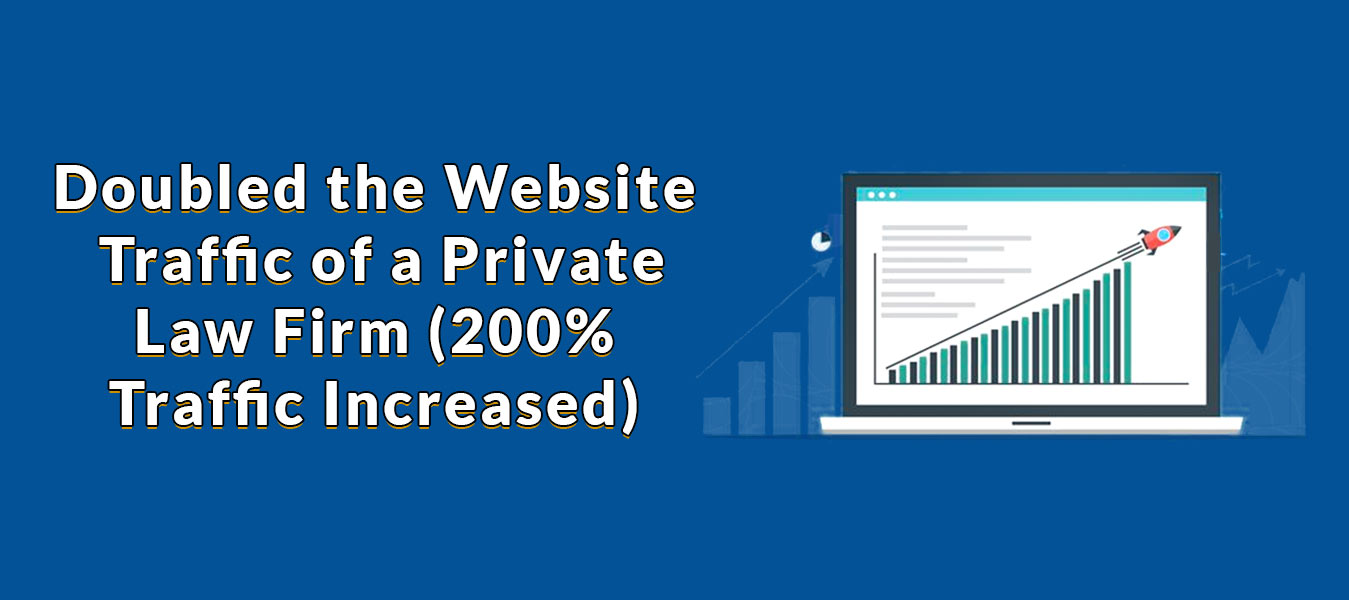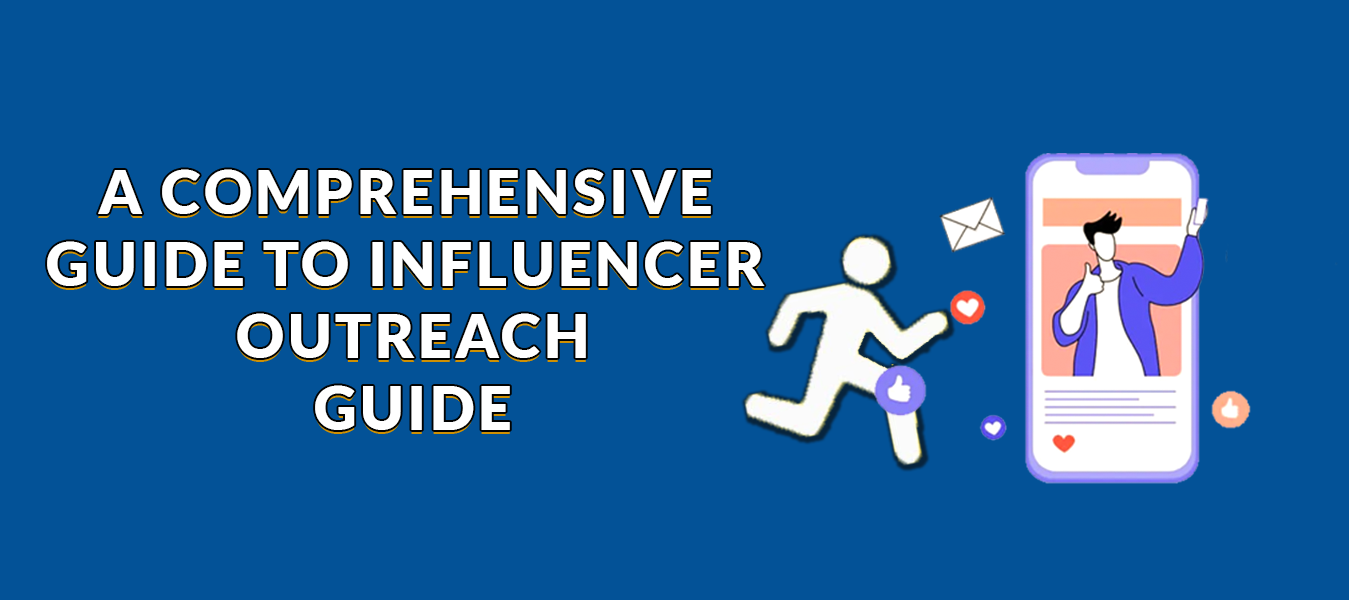Digital marketing is getting more and more competitive with every passing day. With every update that Google announces, the competition gets harder. With the ever-increasing competition, programmatic SEO has become the answer to every marketer’s problem.
Every brand looking to increase its website’s ranking, organic traffic, and visibility without sacrificing time and effort is turning to programmatic SEO. So, if you want to make your website stand out, you need to try out programmatic SEO and optimize your content creation strategy accordingly for Search Engine Optimization.
Programmatic SEO is extremely effective. So much so that big brands like Tripadvisor, Yelp, Eater, and Booking love it as well.
Yes, you have read that right!
Brands like Booking, G2, Pascale, and Glassdoor have climbed to the top of SERPs with the help of programmatic SEO.
It would be safe to say that programmatic SEO is a magic spell that can help you and your brand rank for thousands of well-ranking keywords.
It is the perfect revenue-boosting and time-saving SEO strategy that your website can benefit from.
Let us tell you what programmatic SEO is and how you can use it to bring your business to new SEO heights:
What Is Programmatic SEO?
Although the term “programmatic SEO” has grown in prominence recently, many people are still unsure of what it entails.
Let us explain it to you.
Simply said, programmatic SEO is the process of enhancing Search Engine Optimization (SEO) efforts through automation and data-driven decision-making. Instead of depending exclusively on manual methods, it entails employing software and algorithms to examine and optimize websites for search engines. This speeds up the SEO process considerably.
The reason why it is so effective is because it reaps the benefits of the enormous quantity of data currently available. This way, it helps webmasters make better choices regarding the type of content they need to produce, the organization of websites, and the keywords they should concentrate on.
Here’s Trip Advisor’s example:
Source: Google
It also involves using tools, such as machine learning, big data analytics, and artificial intelligence (AI) algorithms, to find patterns and insights that you can leverage to boost your website’s SEO performance.
Programmatic SEO, as a whole, is a cutting-edge strategy that can assist digital marketers and SEO experts in streamlining their efforts while also enhancing the efficacy of their optimization tactics.
If you want to see it work its magic, try to include programmatic SEO strategies in your digital marketing strategy. You will notice an increase in your website’s search engine ranks, and you will be able to reach your target audience more effectively.
Programmatic SEO Tips for a Successful Strategy
We have rounded the most effective tips to help you learn how to implement a programmatic SEO strategy so you can boost your search engine visibility.
Here’s how you can take your SEO game up a notch and get the most out of it:
-
Explore the Niche and Sub-Niches
If you are creating a new website (in a niche you know nothing about), the initial steps of coming up with a unique programmatic SEO strategy can be a little different from others.
For instance, if you are creating a website in the niche of ‘baby and mother,’ then this is how you should approach it:
- Look for other blogs in the baby and mother niche and go through them.
- Look through their different areas one by one.
- Write down all the subtopics and sub-niches that are present on those websites.
- Once you have all the topics written down, start by Googling all the terms individually.
- Write down all the potential keywords that you come across when you search those terms.
- And then validate all the programmatic SEO ideas that you found by searching those topics.
-
Search for Your Target Keywords
Target keywords are the phrases that include the broad-level queries that you are trying to rank for.
For example, the target keyword or phrase for a website like Booking or Eater would be ‘hotels’ or ‘things to do.’
On the other hand, a website like Glassdoor or Realtor might include ‘average salaries’ or ‘apartments.’
These high-difficulty keywords have a lot of search volume. You can also find out how popular they are by using tools like Google Trends.
These terms are often associated with modifiers because they are used together most of the time.
-
Find Modifiers for Your Keywords
Modifiers are the keywords or phrases that are related to your target keywords or search queries. However, modifiers are used to create a more specific user experience. Similar to the target keywords, modifiers also have a lot of search volume and are quite popular. You can classify them into two types: primary modifiers and secondary modifiers.
Source
Primary Modifiers
Primary modifiers are used to establish a completely new category of search queries. For example, a primary modifier for a search term like ‘hotels’ could be ‘five star hotels’ or ‘three star hotels.’
Secondary Modifiers
Secondary modifiers, on the other hand, describe the target search query. For example, for a keyword like ‘hotels,’ your secondary modifier might be ‘hotels near me’ or ‘cheap hotels.’
Once you have gathered all your target keywords and their modifiers, combine them all together in a list to make sure that your keywords are dropped properly.
-
Utilize Drip Publishing
You might have noticed that Google is slow when it comes to indexing programmatically generated pages. This is because of mass publishing. When you publish hundreds and thousands of web pages at the same time, Google sees that as a red flag. If you don’t meet Google’s criteria, it can potentially penalize you:
So, what should you do?
You should publish your web pages in smaller batches in order to give Google some time to index them before you publish more.
This is called drip publishing.
So, for instance, if you have 700 pages that you need to publish, the best way is to publish 30 to 40 pages at first and wait for Google to index them. Once Google has indexed those pages, you can publish 30 to 40 more pages. Keep repeating these steps until you are done with all of your content and all your web pages are live.
-
Build Your Landing Pages According to Programmatic SEO
Programmatic Search Engine Optimization revolves around creating landing pages at scale while making sure that all of them are unique.
How do you ensure that?
You ensure that by making sure that your landing pages are created around keyword-related search intent. Keep in mind that you are not the one who defines what search intent means to your users. Google determines this on its own. Your best shot at understanding your user’s search intent is by studying all the SERPs and analyzing which keywords rank better and which search intent they fall into.
You can have a better understanding of your keyword search intent by looking at the ‘Related Searches’ section in Google SERPs. For instance:
Make sure that your pages are not the same. Yes, they can have a lot of similar reviews, maps, images, illustrations, infographics, and content, but they can never be exactly the same. Write enough unique content for every landing page on your website that Google’s algorithm perceives as providing unique value to users. You can follow the instructions in the image below to ensure that your content is unique enough for Google:
Moreover, make sure that you stay away from doorway pages. The key to following programmatic Search Engine Optimization ideas is building learning pages at scale while making sure that you still add to your visitors’ value.
-
Avoid Having Too Much Thin Content on Your Website
Thin content offers little to no value to users. Google does not like thin content, and people doing programmatic SEO often end up creating a lot of it.
A common practice among programmatic Search Engine Optimization personnel is writing a few words of text for their web pages. Google often perceives that as thin content. In order to avoid this issue, make sure that the content on your web pages is a minimum of 300 to 400 words.
-
Decrease the Number of Identical Pages on Your Website
Identical pages are created when you have the same content on programmatic websites or multiple web pages. You can avoid this by making sure that all the content on every web page is unique.
In case you have to repeat your text, make sure that it is repeated in the form of sentences, not paragraphs.
You can also use AI tools, such as ChatGPT or paraphrasing tools, to rephrase sentences to avoid any repetition.
-
Always Do a Comparative Analysis of the SERPs
Search your target keywords to find out which brands and websites are occupying the top result spots because those websites are going to be your competitors.
Once you know who your top competitors are, use a keyword research tool like Ahrefs, SEMrush, or Moz to find out which keywords they’re ranking for and how they’re doing it. You can also analyze your competitors’ backlink profiles and their user experience patterns.
When you have all the information you need, you can get a better understanding of what your competitors are doing right. Using that newly found information, you can figure out how you can create your own programmatic SEO strategy to compete with them and beat them at their own game.
-
Use the Best Search Engine Optimization Practices
Keep in mind that programmatic SEO does not mean that you ignore the basic rules of Search Engine Optimization. This is, in fact, one of the most common SEO mistakes that people make when implementing programmatic Search Engine Optimization on their websites.
Just the way you follow conventional Search Engine Optimization rules, you need to make sure that your indexed web pages follow basic off-page and on-page Search Engine Optimization tactics.
For example, you need to make sure that you:
- Write a meta-description that is under 120 characters.
- Include both external links and internal links in your content where needed.
- Optimize your images with alt text and descriptions.
- Include primary keywords in your meta-description, title, headings, body of the content, and URL.
- Build backlinks to all the web pages on your website individually to improve your ranking.
-
Build Web Pages That Directly Address the Users’ Search Intent
Since most of the target keywords that you use will have low competition, you do not have to write long-form content for them in order to compete. However, that does not mean you can create poor-quality content and create doorway pages.
As we have mentioned above, programmatic Search Engine Optimization only works when you are able to understand your users’ search intent. This is important because your programmatic strategies are going to revolve around your users’ intent.
Most importantly, the transactional intent is going to make or break your strategy. Transactional keywords are usually long-tail keywords, and they fall lower in the funnel because the users are looking to take a specific action with these keywords. As a result, they signify a high intent.
Another important aspect you need to consider is your internal linking strategy. Make sure that you always include a ‘top,’ ‘related,’ or ‘other‘ section in your landing page to utilize the benefits of internal linking. This strategy will boost the performance of all of your programmatic web pages on your website.
Programmatic SEO Examples
As you learn how to do programmatic SEO, studying some examples of companies and brands that have done it successfully can help you make your own programmatic SEO strategy.
We have created a detailed list of brands that have created huge and impressive marketing engines with the help of programmatic SEO ideas.
Zapier
Source: Zapier
Zapier created a huge marketing beast for its brand. The brand is known for its ‘[tool] + [tool] integrations.’ This includes a list of tools, including Google Sheets, Slack, Gmail, Google Calendar, etc.
Tripadvisor
Source: Trip Advisor
When you search ‘things to do in London,’ the first result you get in Google’s Search Engine Results Pages is from Trip Advisor. The reason for this is that Trip Advisor has based its entire SEO around “things to do in [city]” using programmatic SEO.

Glassdoor
Source: Glassdoor
Glassdoor’s SEO is centered around any search phrase similar to “[job title] salaries.” When you search for salaries for certain job titles in a certain country, you will notice that Glassdoor is always there.
Realtor.com
Source: Realtor.com
Realtor.com has created a strategy according to real estate searches. Using vast amounts of searches and data available online, they have made sure that their website appears in the SERPs wherever searches for “apartments for sale in [city],” for example, Toronto.
Canva
Source: Canva
Canva is used for all the design templates it provides. From Instagram stories and LinkedIn posts to Facebook ads and carousels, canvas has everything for its users. Its programmatic SEO is focused on “[use case] design template” searches. Therefore, whenever a searcher looks up a design template, Canva leads the SERPs.
Eater
Source: Eater
Eater has used programmatic SEO to ensure its spot in the SERPs whenever a restaurant-related search is made by a user. So, whenever you search for something along the lines of “best restaurants in [city],” you will find Eater.
Nerdwallet
Source: NerdWallet
Nerdwallet is the perfect example of perfecting programmatic Search Engine Optimization for “best [credit card type].” They have utilized automation, algorithms, and user data to get the top results for certain searches.
Booking.com
Source: Booking.com
Booking.com has perfected its SEO strategy for “hotels in [city].” So, if you search “best hotels in Dubai,” for instance, you will be able to spot Booking in the SERPs.
G2
Source: G2
If you are looking for alternatives for a certain app and you look up the search query “top [app] alternatives” on Google, you will see that G2 is among the top SERPs on the first page. The reason for this is that G2 has surrounded its SEO around that kind of search. It even has an article on alternatives for itself.
Payscale
Source: Payscale
Payscale has targeted people looking for average salaries for different job titles in different countries. Its programmatic Search Engine Optimization can be analyzed by the query “average [job title] salary.”
Wise
Source: Wise
Wise has built its brand around exchange rates for currencies. So, whenever searches look for “[currency] to [currency] exchange rate,” Wise shows up in the results, thanks to its programmatic SEO strategy.
Across all these examples, you will notice a pattern of keywords. You will see a similarity in the keywords that these companies have used to make their programmatic SEO work.
Let’s take a look at the categories that have appeared in the examples so far:
- Locations – Tripadvisor
- Integrations – Zapier
- Comparisons – G2
- Templates – Canva
What Are the Challenges of Programmatic SEO?
Dozens of created pages on a website are the end result of programmed SEO. These pages won’t be as helpful, though, if you don’t double-check everything. There are certain potential problems that you may encounter when working with programmatic Search Engine Optimization.
Let’s take a look at them and how to deal with them one by one :
-
Crawlability
It is crucial to decide which pages should be found and then indexed by Google when you have hundreds or thousands of them. It’s obvious that Google cannot rank a page that it cannot find. In order to have a strong information architecture, you must establish an internal linking pattern. Make sure that every web page on your website is categorized in addition to internal linking to guarantee that the search engine will always discover it.
Yes, you have read that right!
Make use of HTML sitemaps without hesitation.
Crawlers can find new pages by using HTML sitemaps. When working on large-scale websites with millions of pages, sitemaps are incredibly helpful. The ideal method to organize pages according to categories is to design a user-friendly sitemap with a logical layout.
Additionally, it is imperative to list the most significant pages first. You can also do it alphabetically.
-
Lack of Content
Numerous SEO programmatic landing pages are built with visual appeal in mind. Apart from pictures, videos, graphics, illustrations, and infographics, there is also a descriptive text that you must include. The descriptor text has a significant impact on ranking as you include your keywords in that text.
Without enough text, Google will consider the content on your page to be thin content, which will lower your ranking because insufficient content has poor value in Google’s eyes.
However, this problem of having a dearth of content can be solved quite easily. You can create a combination of both text and images. The text will help you achieve better data interpretation, and the visual content will enhance user experience.
-
“Copy-Paste” Content
You run the risk of creating duplicate content (AKA copy-paste) on programmatic SEO sites when producing content on a wide scale. This refers to content sections that are either completely similar or identical to one another.
Because you produce content using the same pattern for every page, duplicate content is a common problem, and it can be difficult to maintain originality. This content comes in two varieties. Internal duplicate content is defined as content that is created by a single domain using numerous URLs on the same page.
When Google determines that two or more separate domains have identical page copies, external duplicate content occurs. Due to the confusion caused by twin content, Google is forced to determine which website should appear higher in the search results.
You can use an online duplicate content checker (like Ahrefs, shown above) or plagiarism checker to prevent this issue. By pasting the URL into this checker, you can instantly see how Google evaluates your website.
-
Doorway Pages
Have you ever seen how Google defines doorways pages?
Let us tell you.
According to Google, doorway pages are websites or pages developed in order to rank for particular, related search queries. They are detrimental to users since they may result in a number of pages that are similar in user search results, all of which ultimately direct consumers to the same place.
Doesn’t that sound similar to the definition of a programmatic SEO strategy?
Let’s look at some examples of web pages that might look like doorways pages but are not:
- Content Management System for a brand website
- Content Management System for e-commerce
- Content Management System for a restaurant
- Content Management System for a blog
These pages are, by nature, doorway pages.
But why are they, not doorway pages?
The reason is content. Fresh and good-quality content is the best trump card. Google will approve of pages that you produce solely for quality purposes.
You can avoid doorway pages by looking for unique information, products, and services. Nonetheless, based on user interaction, it might be appropriate.
So, bear that in mind: Google won’t remove your content as long as it has a legitimate purpose.
How Can You Learn Programmatic SEO?
Well, you can always take a programmatic SEO course. Programmatic SEO courses offer a comprehensive learning experience that combines the principles of traditional SEO with cutting-edge technologies and techniques.
Whether you’re a marketing professional looking to enhance your skill set or an aspiring entrepreneur aiming to unlock the full potential of your online venture, these courses provide a unique opportunity to master the art of optimizing websites for search engines efficiently and effectively.
We have created a list of some really good programmatic SEO courses that will help you understand the basics of programmatic SEO WordPress and programmatic SEO ranking.
Let’s take a look at them:
| Name Of The Programmatic SEO Course | Offered By | Duration | Pricing Details |
| Learn Programmatic SEO | Preetam Nath (Co-founder of DelightChat) | 1.5 hours | $49 |
| Learn programmatic SEO with practical, real-world, examples | Practical Programmatic | n/a | $197 |
| FREE Programmatic SEO Course | Allison Seboldt | 81 minutes | $0+ |
| Programmatic SEO course for beginners (2022) | SEO matic | 9 individual lessons | 100% free |
| No-Code Programmatic SEO Hub | Programmatic SEO Hub | 4.5+ Hours | $79 |
| Programmatic SEO Notion OS: Boost Your Organic Traffic | Deepak Ness (Notion Stack) | 5+ hours | $180.00 |
| Building SEO Pages at Scale | Nicolás Cerdeira
(Founder of Failory) |
4 weeks | $899 (originally $2,000) First time cohort discount price. Use code: FIRSTCOHORT |
| Programmatic SEO Pro | Abhishek Sood | 8 individual lessons | ₹5000.00 |
What Types of Tools Can You Use for Programmatic SEO?
You will find numerous types of tools for programmatic SEO. Each tool is designed to help websites optimize their search engine ranking, increase their traffic, and improve their online visibility.
Let’s take a look at some of the most common types of programmatic SEO tools:
-
Content Optimization Tools
Content optimization tools assist companies in optimizing the content of their websites for search engines. They offer recommendations for enhancing metadata (meta title, meta-description, and meta tags) headers, titles, and other on-page components to raise rankings for desired keywords.
-
SERPs Tracking Tools
SERP tracking tools keep tabs on how well a website performs for specific keywords in search engine results pages (SERPs). They can offer information on how rankings have changed over time, enabling firms to monitor the success of their SEO campaigns.
-
SEO Auditing Tools
These tools explore a website to find any technical problems that might be detrimental to its ranks in search engine results. They look at things like duplicate content, broken links, duplicate material in URLs, and other technical problems.
-
Backlink Analysis Tools
Backlinks analysis and link building tools examine the backlink profile of a website, spotting both high-quality links and potential areas for development. They can assist companies and SEO marketers in tracking the success of their link-building initiatives and tracking the growth of their backlinks over time.
-
Keyword Research and Analysis Tools
Keyword research tools like SEMrush and Ahrefs assist companies and SEO executives in choosing the most effective keywords and phrases to target for their websites. To ascertain which keywords are most likely to generate traffic and conversions, they examine search volume, competitiveness, and other variables.
Programmatic SEO Frequently Asked Questions
How has programmatic SEO made brands like TripAdvisor and Airbnb so successful?
Companies like TripAdvisor, Booking, Eater, and Airbnb construct specific pages for each city, restaurant, or hotel in their database using programmatic SEO. They accomplish this by using the extensive list of hotels or places they already have. In addition, by providing the solutions they seek, this technique entices more travelers to visit their website.
How can you benefit from following a programmatic SEO strategy?
You’ll gain important knowledge about user requirements that you can utilize to improve your website’s content. In addition to that, programmatic SEO allows you to create landing pages more quickly and effectively while providing users with a tailored website experience.
How can programmatic SEO prevent you from falling into a lengthy and slow SEO process?
Programmatic SEO avoids a sluggish SEO procedure by employing a methodical technique for researching keywords, comprehending user intent, and creating hundreds of landing pages. By following this methodical technique, you can offer an experience that swiftly and effectively engages the interests of the user and your potential customer.
When should Programmatic SEO be avoided?
Programmatic SEO does not work at all times, despite being a profitable strategy for many organizations. A business with just a few goods or services or a narrow market doesn’t need to construct a ton of landing pages.
Programmatic SEO might not be an option for you if you are on a tight budget or time schedule. Before choosing a programmatic SEO approach, we recommend you assess the needs and potential of your company.
What is transactional keyword intent as far as programmatic SEO is concerned?
Transactional intent keywords signify that the searcher is about to make a purchase or perform another action on a website. In essence, programmatic SEO sales sites have a commercial goal, and transactional keywords come in handy for them.
How can you make landing pages for your website’s programmatic SEO strategy?
Create a template in your mind, divide it into pieces, and add questions to each section to serve as a guide for keyword research. Then group keywords and use keyword research tools to create landing pages for programmatic SEO.
Summing It Up
Programmatic Search engine optimization is not a walk in the park. However, this marketing tactic will do wonders for any company aiming to increase organic traffic by publishing frequently. Your goal, at all times, should be to create content that your users will find beneficial. If not, Google will consider your pages to be troublesome, in which case all of your efforts will have been in vain.
We all have seen how crucial programmatic SEO is to a company’s success in digital marketing and online environments with the examples above. By utilizing it to your advantage, you can expand your audiences and enhance the usability and appeal of your websites for both users and search engines.
A programmatic SEO strategy has the potential to be quite profitable when you consider the return on investment of SEO. This is due to the fact that programmatic SEO requires much less money to operate than other forms of Search Engine Optimization. When you start working on it, it does not need a lot of SEO professionals. Plus, when it is up and running, it does not need any kind of human intervention.
In other words, you get to keep your human resources while benefiting from your investment in this cutting-edge SEO strategy.
So, what’s stopping you from getting started with it?
